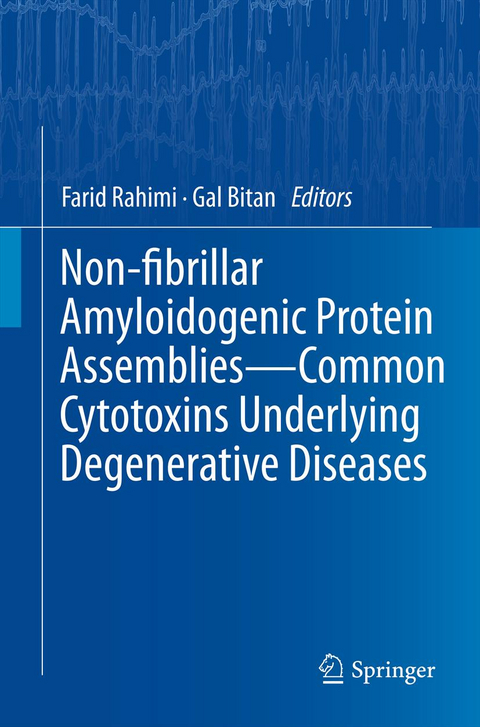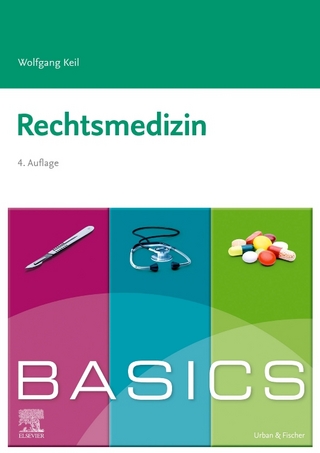
Non-fibrillar Amyloidogenic Protein Assemblies - Common Cytotoxins Underlying Degenerative Diseases
Springer (Verlag)
978-94-007-9895-3 (ISBN)
Amyloid-forming proteins are implicated in over 30 human diseases. The proteins involved in each disease have unrelated sequences and dissimilar native structures, but they all undergo conformational alterations to form fibrillar polymers. The fibrillar assemblies accumulate progressively into disease-specific lesions in vivo. Substantial evidence suggests these lesions are the end state of aberrant protein folding whereas the actual disease-causing culprits likely are soluble, non-fibrillar assemblies preceding the aggregates. The non-fibrillar protein assemblies range from small, low-order oligomers to spherical, annular, and protofibrillar species. Oligomeric species are believed to mediate various pathogenic mechanisms that lead to cellular dysfunction, cytotoxicity, and cell loss, eventuating in disease-specific degeneration and systemic morbidity. The particular pathologies thus are determined by the afflicted cell types, organs, systems, and the proteins involved. Evidence suggests that the oligomeric species may share structural features and possibly common mechanisms of action. In many cases, the structure–function interrelationships amongst the various protein assemblies described in vitro are still elusive. Deciphering these intricate structure–function correlations will help understanding a complex array of pathogenic mechanisms, some of which may be common across different diseases albeit affecting different cell types and systems.
1. Overview of Fibrillar and Oligomeric Assemblies of Amyloidogenic Proteins.- 2. Pathologic Lesions in Alzheimer disease and Other Neurodegenerative Diseases—Cellular and Molecular Components.- 3. Preparation and Structural Characterization of Pre-fibrillar Assemblies of Amyloidogenic Proteins.- 4. Biological Targeting and Activity of Pre-fibrillar Aβ Assemblies.- 5. The Role of Aβ and Tau Oligomers in the Pathogenesis of Alzheimer’s disease.- 6. Oligomers of α-Synuclein in the Pathogenesis of Parkinson’s Disease.- 7. Cytotoxic Mechanisms of Islet Amyloid Polypeptide in the Pathogenesis of Type-2 Diabetes Mellitus (T2DM).- 8. Protein Misfolding and Toxicity in Amyotrophic Lateral Sclerosis.- 9. Structural Studies of Prion Proteins and Prions.- 10. Role of Prion Protein Oligomers in the Pathogenesis of Transmissible Spongiform Encephalopathies.- 11. When More Is Not Better: Expanded Polyglutamine Domains inNeurodegenerative Disease.- 12. Protein Misfolding and Toxicity in Dialysis-Related Amyloidosis.- 13. Transthyretin Aggregation and Toxicity.- 14. Strategies for Inhibiting Protein Aggregation: Therapeutic Approaches to Protein-Aggregation Diseases.
| Zusatzinfo | VIII, 568 p. |
|---|---|
| Verlagsort | Dordrecht |
| Sprache | englisch |
| Maße | 155 x 235 mm |
| Themenwelt | Studium ► 2. Studienabschnitt (Klinik) ► Pathologie |
| Naturwissenschaften ► Biologie ► Biochemie | |
| Naturwissenschaften ► Biologie ► Humanbiologie | |
| Naturwissenschaften ► Biologie ► Zoologie | |
| Schlagworte | Amyloidogenic proteins • Degenerative/neurodegenerative diseases • Mechanisms of disease • Non-fibrillar oligomeric assemblies • Protein-misfolding diseases |
| ISBN-10 | 94-007-9895-4 / 9400798954 |
| ISBN-13 | 978-94-007-9895-3 / 9789400798953 |
| Zustand | Neuware |
| Haben Sie eine Frage zum Produkt? |
aus dem Bereich


